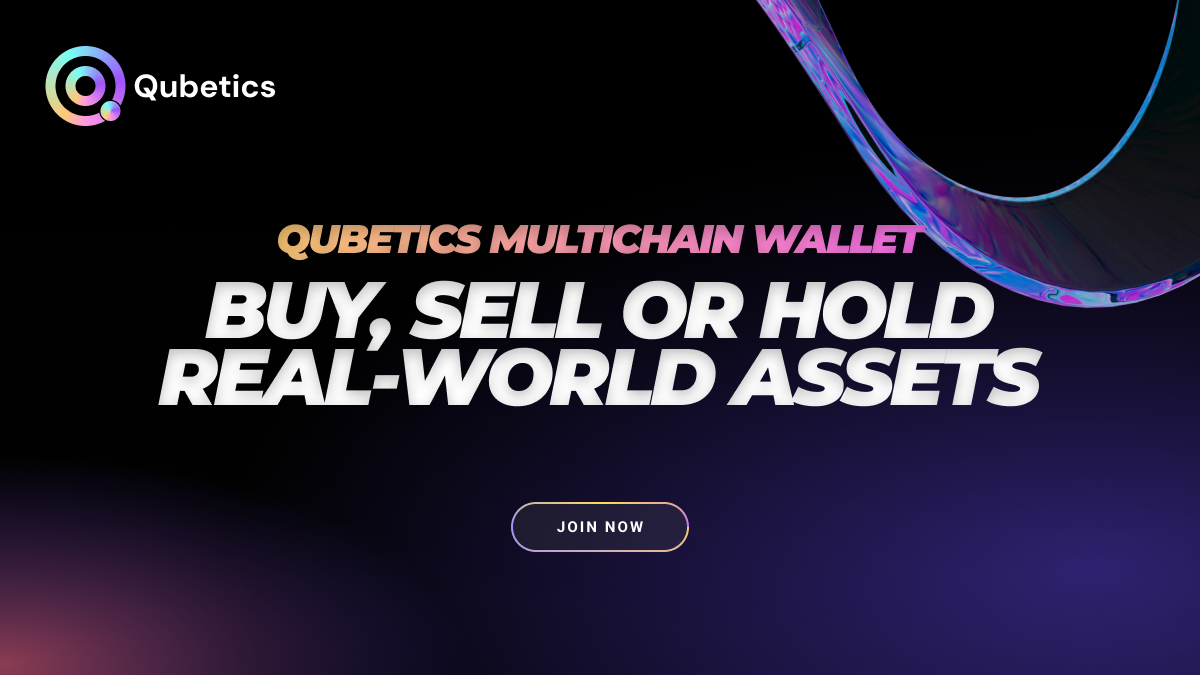The crypto market has had its fair share of drama lately. Bitcoin and other top cryptocurrencies like Ethereum, Solana, and XRP have been struggling to maintain stability, with Bitcoin dipping below $94,000 recently. This drop wiped out weeks of gains, signaling growing uncertainty among investors. U.S. spot Bitcoin ETFs saw $580 million in net outflows last week, snapping a six-week inflow streak. Trading volumes on major exchanges have plummeted, hitting their lowest levels since the last U.S. presidential election.

While some investors panic, big institutional players aren’t backing down. Meanwhile, retail investors are searching for the next big opportunity—projects that offer real-world solutions and long-term growth potential.
That’s where Qubetics ($TICS) comes in. Unlike older blockchains that have struggled with usability, security, and scalability, Qubetics aims to bridge the gap with its innovative ecosystem. This project isn’t just another token—it’s building essential blockchain infrastructure that makes digital assets more accessible, secure, and efficient for businesses and individuals alike.
Qubetics: The Future of Non-Custodial Multi-Chain Wallets
Qubetics isn’t just another crypto project—it’s redefining how people interact with digital assets. Its non-custodial multi-chain wallet is a game-changer, giving users full control over their funds while allowing seamless transactions across multiple blockchains. Unlike traditional wallets that rely on a single blockchain, the Qubetics Wallet enables users to store, send, and receive a variety of cryptocurrencies without the usual headaches of cross-chain compatibility.

Picture a freelancer in Mexico City who gets paid in different cryptocurrencies. With most wallets, converting and managing funds between networks is a hassle. Qubetics solves this problem by integrating SWFT Blockchain’s cutting-edge technology, enabling fast and cost-effective swaps between chains. Whether it’s Bitcoin, Ethereum, or Solana, users can move their assets freely without third-party restrictions.
But Qubetics isn’t stopping there. The project has teamed up with the 1inch Network, a leading DeFi aggregator, to optimize trading. This means users can tap into hundreds of decentralized exchanges (DEXs) to find the best prices and liquidity. A day trader in São Paulo, for example, no longer has to manually search for the best rates—1inch’s advanced aggregation technology does it automatically, ensuring they get the best possible deal.
The integration with SWFT Blockchain takes security and efficiency to a whole new level. SWFT’s encryption protocols ensure that transactions remain protected while allowing seamless asset management. Businesses, investors, and casual users can now transact with confidence, knowing their funds are safe from security breaches.
Qubetics is making waves in the crypto community. In its 22nd presale stage, the project has already sold over 480 million tokens to more than 20,500 holders, raising $13.3 million. Investors can still get in at $0.0807 per token, but demand is surging fast. Analysts predict the price could hit $0.25 by the end of the presale, generating a 209% ROI. Long-term projections suggest that $TICS could climb as high as $15 post-mainnet launch, delivering an astronomical 18,480% ROI for early adopters.
Tron: The DeFi Powerhouse of Stablecoin Transactions
Tron (TRX) has been quietly dominating the stablecoin market. With a $4.5 billion surge in USDT and USDC transactions, the network is proving its worth in the DeFi ecosystem. While critics have raised concerns about security vulnerabilities, Tron remains one of the most widely used networks for fast and cheap transactions.
A small business owner in Buenos Aires looking to send stablecoin payments to suppliers in China doesn’t want to deal with expensive bank fees or slow transaction times. Tron’s network provides a low-cost, high-speed alternative, making it a preferred choice for international transactions.
Tron has also been making moves in DeFi, offering users a variety of lending, staking, and yield farming opportunities. Unlike Ethereum, where gas fees can be unpredictable, Tron provides a cost-effective way to engage with DeFi applications without worrying about excessive transaction costs.
Despite concerns over illicit activity, the network’s adoption continues to grow. Some experts believe that if Tron can address its security concerns, it will further solidify its dominance in the stablecoin and DeFi markets.
Arbitrum: The Layer-2 Giant Struggling to Rebound
Arbitrum (ARB) entered the crypto scene after the 2022 bear market, positioning itself as a powerful Layer-2 solution for Ethereum. The project aimed to address Ethereum’s scalability issues by offering faster and cheaper transactions. While its early adoption was promising, ARB has struggled to maintain momentum.
The token recently hit an all-time low of $0.37 before rebounding 26%. However, 99% of ARB holders remain at a loss, raising concerns about its short-term performance. Market data suggests that strong resistance exists between $0.52 and $0.53, where nearly 30,000 addresses hold over 1 billion tokens. Breaking past this level could trigger a rally, but for now, the token remains stuck in a bearish cycle.
A DeFi user in Lima looking to execute smart contracts on Ethereum without paying high gas fees might turn to Arbitrum for relief. The network offers a smoother experience, but unless the market recovers, price stability remains uncertain.
Despite its struggles, Arbitrum’s long-term potential is undeniable. If it can regain bullish momentum, analysts suggest it could climb back toward $0.60 or even $0.74. For now, cautious investors are watching closely.

Conclusion
Crypto investors searching for the top crypto coins to buy now have plenty of options. Qubetics stands out with its revolutionary multi-chain wallet and strategic partnerships. Tron continues to dominate stablecoin transactions, making it an essential player in the DeFi space. Arbitrum, despite recent struggles, remains a promising Layer-2 solution with long-term upside.
For those looking to capitalize on the next big opportunity, Qubetics’ presale presents an attractive entry point. With analysts predicting explosive growth, getting in early could be a game-changing move. Whether it’s securing digital assets, engaging in DeFi, or exploring scalable blockchain solutions, these three projects are worth considering.

For More Information:
Qubetics: https://qubetics.com
Telegram: https://t.me/qubetics
Twitter: https://x.com/qubetics
FAQs
1. What makes Qubetics’ multi-chain wallet unique?
Qubetics’ wallet integrates with multiple blockchains, offering seamless swaps, decentralized trading, and enhanced security through SWFT Blockchain and 1inch Network.
2. How does Tron contribute to the DeFi ecosystem?
Tron provides fast, low-cost stablecoin transactions and access to various DeFi services, including lending, staking, and yield farming.
3. What challenges is Arbitrum facing?
Arbitrum struggles with price resistance at $0.52-$0.53, and 99% of holders remain at a loss, making its short-term market recovery uncertain.
4. How can investors participate in the Qubetics presale?
Investors can buy $TICS tokens at $0.0807 during the 22nd presale stage before prices rise further.
5. Why is institutional investment still flowing into crypto?
Despite volatility, major institutions continue to invest, seeing long-term potential in blockchain and digital assets.
DISCLAIMER: This article is not intended as financial advice. Educational purposes only.














